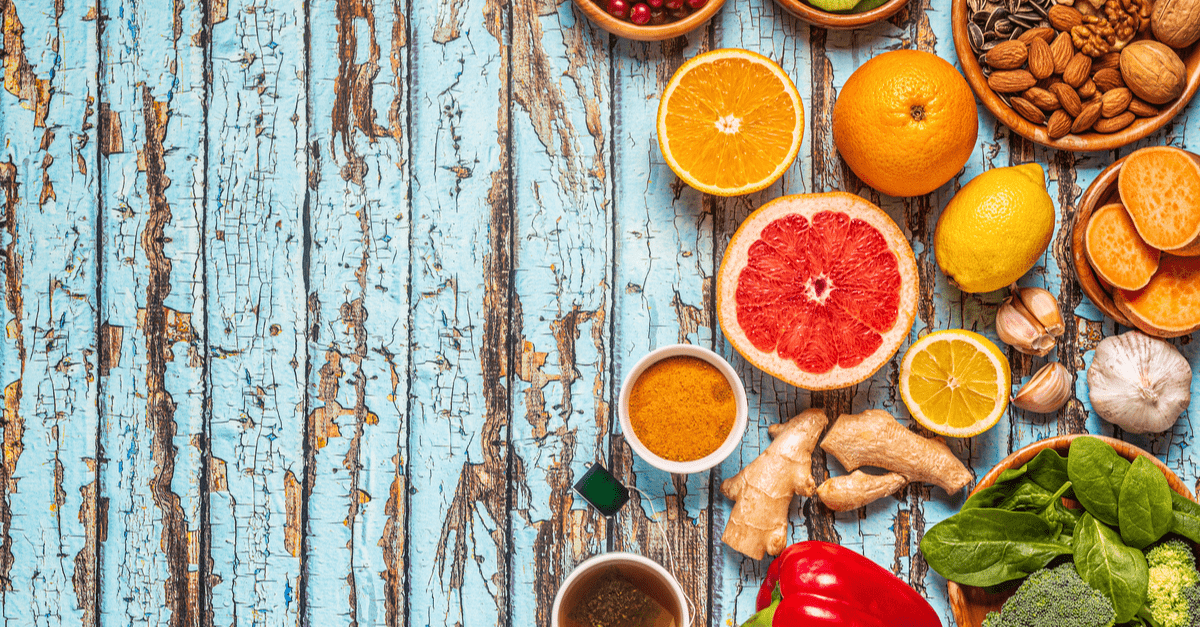Blog
Plant-Based and Gluten-Free Ways to Boost Your Energy
There are many ways to boost your energy naturally. In this article, we’ll be looking at plant-based and gluten-free ways to change your diet to increase your energy levels. Your food is your fuel and can give you energy or impact your energy negatively if you eat something that doesn’t agree with your body. Your diet is an important factor to having enough energy throughout the day, which you probably know if you’re choosing to, or need to be, eating plant-based and gluten-free. Having dietary restrictions can make eating challenging, so let’s look at some of the foods you can choose that will support your energy levels, naturally, and how to eat them.
Boost your Energy with Breakfast
Your body is digesting dinner while you sleep and using that fuel to make repairs and other metabolic functions. By the time you wake up, you need fresh fuel to get started with your day. If you miss breakfast, you’re starting your day with an “energy deficit”, according to Dr. David S. Ludwig. If you’re starting without a fresh boost of fuel from breakfast, your body will have to tap into its energy reserves, which may leave you feeling more tired than usual.
What makes a good breakfast for increased energy levels? You want to choose a quality protein, some whole grains, and fruit or vegetables. Gluten-free whole grains are important because they will digest slowly, keeping your blood sugar regulated. High-quality proteins burn those quality carbohydrates you chose, giving you steady energy throughout the morning. And fruits and vegetables are full of vitamins, antioxidants, and fiber. Some ideas: a “scramble” made with tofu and fresh vegetables paired with a slice of gluten-free whole-grain toast with plant-based butter spread will give you plenty of fuel for the day. Or try a high fiber gluten-free cereal with coconut milk, which is full of healthy fats, topped with fresh fruit, along with a handful of nuts like walnuts, pecans, or almonds. Let’s look at the components of a healthy breakfast.
Choose Gluten-Free Whole Grains
Whole grains support a healthy blood sugar system and can prevent a mid-morning energy crash. While there are hundreds of whole-grain cereals to choose from, consider choosing gluten-free bran cereal, gluten-free whole grain flakes, rolled oats*, or steel-cut oats. You’ll want to choose a cereal with 5 grams of fiber per serving, less than 300 milligrams of sodium, less than 5 grams of sugar per serving, and whole grains listed as the first ingredient.
Prioritize Protein
For a plant-based, protein-rich breakfast, you can’t look at the traditional choices of dairy, such as Greek yogurt or eggs, or even salmon. Other protein-rich options for plant-baseds include soy products like tofu or soy yogurt, other beans like black beans or pinto beans, and nuts. While there are many meatless breakfast “meats” out there, be sure to check their ingredient labels to make sure you aren’t ingesting gluten or a lot of sodium or sugar. Try making pancakes out of chickpea flour, which is very high in protein. You can make chickpea pancakes savory or sweet. Try making a plant-based burrito with plant-based refried beans or whole black beans, coupled with sweet or regular potatoes, salsa, and avocado for some healthy fats. Another great protein-rich plant-based breakfast idea is a piece or two of gluten-free whole-grain toast topped with mashed, seasoned avocado, and seasoned chickpeas.
Choose Whole Grains
Hot cereals are a healthy, economical way to start your day and are completely customizable. You can take your hot cereal in a sweet or savory direction. Oatmeal, both rolled, and steel-cut is full of fiber, minerals, and vitamins and is flexible flavor-wise. You can top your oatmeal with plant-based “milk” like soy, coconut, or almond, a plant-based butter spread, cinnamon for flavor and blood sugar support, fresh fruit like blueberries or raspberries, dried fruit like cranberries or raisins, and seeds like flax or sunflower for some healthy fats.
For a savory take on oatmeal, consider adding sautéed vegetables like onions and green peppers, whole black beans for fiber and vitamins, avocado for some healthy fat, and adding tofu to the vegetables when you sauté them. You can also use salsa, greens, or fresh tomatoes in your savory breakfast oatmeal.
Hot cereal isn’t limited to oatmeal. Quinoa makes a great choice for a breakfast hot cereal. Quinoa, in addition to being flavorful and full of fiber, is also a complete protein. Or consider choosing a gluten-free or multi-grain blend hot cereal, like Bob’s Red Mill’s brown rice hot cereal or their Mighty Tasty gluten-free hot cereal. Switching up your hot cereal routine can be fun, nutritious and keep you from being burnt out on oatmeal.
Breakfast is Key
Before you make your breakfast, consider taking one of Seattle Gummy’s Mocca Shots or wellness gummies. Plant-Based and gluten-free, the caffeinated Mocca Shot is full of vitamins and herbs that give you steady energy throughout your morning, helping you avoid the crash that might come with a basic cup of coffee. Seattle Gummy also offers delicious wellness chews, like their Elderberry and Goji Berry Immunity Shot multivitamin, which is powerful, , and full of berries, giving you a full spectrum immunity boost, which will pair beautifully with your healthy breakfast. *While oats in and of themselves are gluten-free, they are often processed in facilities that process wheat. If you are especially sensitive to gluten, you may want to consider choosing oats that were prepared in a gluten-free facility, like Bob’s Red Mill’s gluten-free oatmeal.

